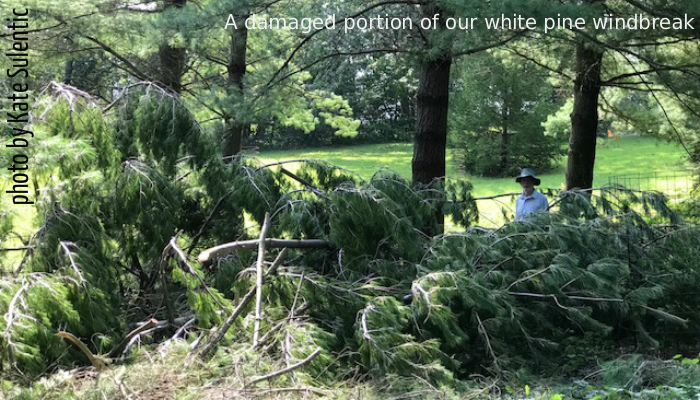How Do Birds Survive the Storms?

On early evening of August 28, an aggressive storm passed through southwestern Johnson County. On the radar images it included a bright red dot, which centered on our neighborhood. And the images were correct. At its peak for perhaps 12 minutes, the air was a slurry of shredded leaves and rain, which was blowing horizontally. I stood in the open garage and watched it blow past, and visibility was less than 50 feet. Heavy objects in the yard got up and moved; I’ve only seen a carefully stacked woodpile blow apart on one other occasion.
The violence left me wondering whether our local native birds survived this intensity, especially small birds (which are so lightweight) and large birds (which have big wing areas). We have a lot of habitat and an abundance of wildlife around our neighborhood and I know approximately what to expect in terms of sightings. So I spent some time the following day visiting places where I could estimate whether the usual summer residents were still there. The results of this totally unscientific survey included:
- In the early morning, the robins were out in the yard, hunting earthworms in the wet soil, just like they always were. In the hedgerow, laden with fruit, especially gray dogwood, there seemed to be a dearth of cardinals, which are not easily overlooked.
- For the smaller birds I selectively watched for goldfinches and indigo buntings because they are easy to identify from a distance. They seemed to be as abundant as before the storm.
- I knew where the hummingbirds would be if they survived the storm, so I sat in a chair facing our large trumpet honeysuckle trellis, which was still reasonably floriferous. Within perhaps ten minutes, there were two of them jousting over a flower cluster, as though nothing had happened.
- We usually have a great blue heron hunting along the shore of our pond in the early morning. It often spends the night in a treetop within sight of the pond, and it is not a bird I’ve ever seen take shelter down in the bushes. But there it was the next morning, hunting along the shore as though nothing had happened.
While picking up endless sticks in the yard and along trails, I often found sticks stuck 2-4 inches into the wet ground, having arrived there as projectiles. A wind velocity of 86 mph was recorded at the Iowa City airport, which also says projectiles. Therefore, I think this means that birds survival depends especially upon avoiding being hit by a projectile, or becoming one.
In our 7-acre community woodlot, the western edge was shredded and mangled by this storm, which blew in from the west. But the center and eastern sectors sustained little damage, as evidenced by only scattered sticks along the trail in those locations.
We also have a mature and quite dense hedgerow that is about 5 rows deep of mostly shrubs and a few young trees. Even though fully exposed to the wind that day, there were no sticks on the ground in the few gaps still left between rows. And portions of the wetland beside our pond contain some dense patches of cattails that were undamaged by the storm, and could have served as a shelter for herons and turkeys.
So at our place, a key to birds surviving violent storms appears to be good habitat, some dense enough to provide shelter. Much of ours was planted during past decades, and now seems especially worthwhile.


